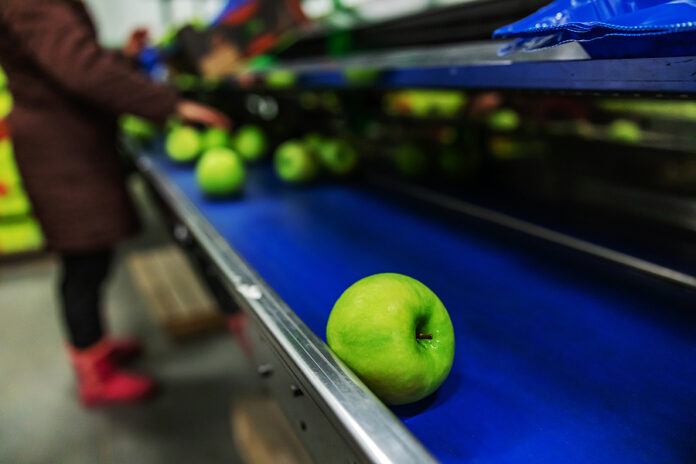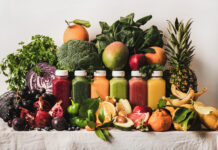
By Morten Larsen, CEO & Founder of EcoloxTech and Francine L. Shaw, food safety specialist, Founder of Savvy Food Safety, and author of “Who Watches the Kitchen?”
Food businesses across the supply chain have a responsibility to keep foods – and consumers – safe. Yet, unfortunately, food safety breaches keep occurring.
In late 2023 alone, there were multiple incidents involving multi-state produce recalls. The most widely publicized foodborne illness outbreak involved salmonella-tainted cantaloupe, which sickened hundreds of people nationwide, and even killed at least 10 consumers. Around the same time, peaches, plums and nectarines sold at national retail locations, and Fresh Express spinach, sold across multiple states, were potentially contaminated with Listeria monocytogenes, which can cause serious, sometimes fatal infections, and had to be recalled.
And while tainted produce has seemed like a common occurrence lately, it hasn’t been the only source of food safety breaches. Remember when Chipotle’s multiple foodborne illness outbreaks made headlines? Customers’ illnesses were traced back to Chipotle employees – in different locations – who worked while sick with norovirus, which spread to the food – and the guests. Cross-contamination may have occurred from employees not properly washing their hands, then touching food and food contact surfaces. Disinfecting and sanitizing the foods and surfaces with HOCI would have likely helped prevent the spread of the pathogens.
As 48 million people get sick and 3,000 die from foodborne illness in the US each year, the food industry must work proactively – with every tool at their disposal – to prevent these food safety breaches from happening.
Food safety breaches are 100% preventable, so why do they keep happening? And what can we, as an industry, do to stop them?
HOCI: A safer, more effective way to disinfect and sanitize
Now, suppose for a moment that your food business had washed your cantaloupe, peaches, spinach, or other produce with Hypochlorous acid (HOCl) – a powerful, versatile, safe disinfectant and sanitizer – before processing it. When food businesses pre-wash produce with HOCI, it eliminates dirt, feces, and other contaminants that could sicken (or even kill) consumers. HOCl is non-toxic, food-safe, eco-friendly, and 80-100x more potent than bleach, making it a preferred sanitizer choice for many processors, manufacturers, retailers, restaurants, and other food brands.
Using HOCI on your produce – as well as your surfaces and equipment – could potentially eliminate harmful pathogens and help prevent the ensuing illnesses, damaging fallout, and nationwide recalls. HOCI could also help eliminate norovirus on foods and surfaces, which caused such massive problems for Chipotle during their foodborne illness outbreaks. As we’ve repeatedly seen, food safety breaches can cause excessive (and expensive) financial, legal, and reputational damage for businesses – as well as serious, widespread illnesses for their customers.
Why is HOCI a better option?
HOCI is generated through electrolysis, combining salt and water to create a solution that contains hypochlorous acid, a powerful sanitizing agent. HOCI is naturally formed in various environments, including the human body, playing a crucial role in disinfection and sanitation.
HOCI is becoming more widely used in numerous industries – including foodservice, hospitality, healthcare, travel, etc. – because of its effectiveness in killing bacteria, viruses, and other pathogens, and its compliance with CDC, FDA, and EPA regulations. Due to its safety and effectiveness, HOCI is expected to gain a more significant following in 2024 and beyond.
Notably, HOCI is:
- Effective. HOCI kills bacteria, viruses, fungi, and other pathogens, and is extremely effective against MRSA, COVID, Influenza, and Norovirus, as well as common foodborne pathogens like E. coli, Salmonella, and Listeria.
- Compliant. Importantly, HOCI is compliant with CDC, FDA, and EPA regulations, making it a gold standard disinfecting and sanitizing option.
- Non-toxic, eco-friendly, and 80-100x more potent than bleach. Pre-washing produce with HOCl eliminates dirt, feces, and other contaminants that could sicken consumers. HOCl is non-toxic, sustainable, and safe to use on food. Unlike some other sanitizers that may leave harmful residues, HOCl breaks down into simple saltwater after use, posing no risk to consumers or the environment.
- Efficient. Since HOCl doesn’t need to be rinsed off surfaces or foods, it saves time, effort, and water. This is a significant advantage in food processing environments, where speed and efficiency are crucial. And since HOCI is a very strong oxidant, the reaction time compared to bleach, lactic acid and peroxide-based sanitizers is much shorter, even at low concentration.
- Odorless and tasteless. HOCl doesn’t leave any odor or taste behind, essential for maintaining food quality and characteristics, making it the preferred choice for food processing applications and water treatment. In contrast, ozone can sometimes leave a distinct smell or taste.
- Versatile. HOCl can be used in various applications, including food, surface, and equipment disinfection. It can be used as a dip wash, spray, and fog. Food brands can quickly cover large areas using a ULV Fogger or electrostatic sprayer.
- Safe and easy to handle. HOCI is generally safer and easier to handle than other types of sanitizers and disinfectants, and HOCI has a longer shelf life. HOCl can be applied in various ways – as a liquid, spray, or fog. While it’s safe and easy to handle – and there’s no specialized equipment required – reputable manufacturers and proper training are essential.
- Non-hazardous to human (and environmental) health. HOCl is non-toxic, eliminating the risks for respiratory issues, while ozone can be hazardous to human health if inhaled in significant quantities. Also, HOCl breaks down into harmless substances (mainly water and salt), whereas ozone can produce harmful by-products in certain conditions.
Increasingly, food businesses – including processors, manufacturers, distributors, retailers, restaurants, etc. – are discovering the many benefits of HOCI. In fact, they’re finding that HOCI is the best choice to disinfect and sanitize their food, equipment, and surfaces. Rely on HOCI to maximize food safety and minimize risks by disinfecting and sanitizing effectively, sustainably, and responsibly.
 Morten Larsen is CEO & Founder of EcoloxTech, which is leading the way in eco-friendly disinfection solutions, uniquely using Hypochlorous acid (HOCl), a naturally occurring, eco-friendly disinfectant that has gained recognition for its proven effectiveness in killing bacteria, viruses, and other pathogens, including MRSA, E. coli, COVID, Influenza, and Norovirus.
Morten Larsen is CEO & Founder of EcoloxTech, which is leading the way in eco-friendly disinfection solutions, uniquely using Hypochlorous acid (HOCl), a naturally occurring, eco-friendly disinfectant that has gained recognition for its proven effectiveness in killing bacteria, viruses, and other pathogens, including MRSA, E. coli, COVID, Influenza, and Norovirus.
 Francine L. Shaw is a food safety specialist, podcaster, founder of Savvy Food Safety, author of “Who Watches the Kitchen?”, and a successful entrepreneur, and speaker who spent 30+ years working in the foodservice industry.
Francine L. Shaw is a food safety specialist, podcaster, founder of Savvy Food Safety, author of “Who Watches the Kitchen?”, and a successful entrepreneur, and speaker who spent 30+ years working in the foodservice industry.









![[Report] 2025 State of Food Manufacturing: Digital Transformation](https://foodindustryexecutive.com/wp-content/uploads/2025/04/2025-State-of-Food-Manufacturing_-Digital-Transformation-324x160.png)